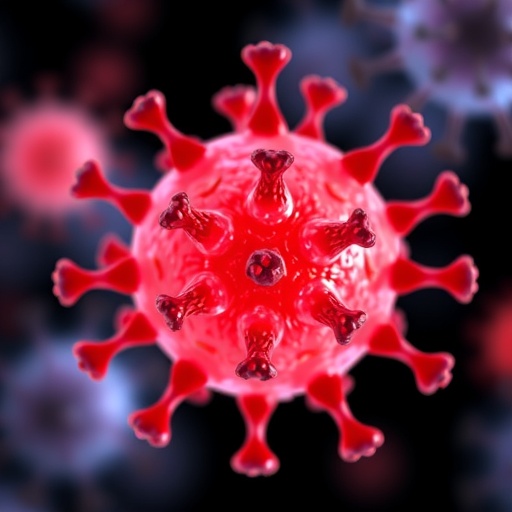A new renal biomarker was presented at the ERA-EDTA Congress last year: that shows that urinary DKK3 might help to identify patients who are at risk of progressive chronic kidney disease (CKD).
The pathological change that correlates with progressive kidney damage is tubulointerstitial fibrosis, the mechanisms of which are the subject of intensive research at present. Damaged cells of renal tubules produce various cytokines, which on one hand control regenerative processes, but which on the other can also lead to the development of tubulointerstitial fibrosis. Regenerative processes may occur in the early stages of activation, via the well-known Wnt signaling pathway (signaling pathway for cell differentiation and proliferation/regeneration), but continuous Wnt activation is detrimental and induces tubulointerstitial fibrosis. Modulators of the signaling chain include Dickkopf-related (DKK) proteins, which interact with the canonical Wnt signaling pathway. Urinary DKK3 can thus be used as a biomarker for tubular cell stress and progressing tubulointerstitial fibrosis – and therefore potentially as a marker for distinguishing progressive kidney injury.
Yesterday, an observational cohort study was published, which aimed to test the association between the ratio of preoperative urinary concentrations of DKK3 to creatinine (DKK3:creatinine) and postoperative acute kidney injury (AKI),defined according to the Kidney Disease Improving Global Outcomes [KDIGO] criteria, and subsequent kidney function loss.
AKI is a common complication after cardiac surgery. The incidence of cardiac surgery-associated AKI varies widely from 7 to 40% depending upon the patient population, the procedure and how AKI is defined. The risk increases in patients with known co-morbidities and the severity fluctuates from subclinical AKI, an increase of biochemical markers of kidney injury without a decrease in renal function, to severe AKI requiring renal replacement therapy with dialysis. The development of AKI after cardiac surgery has a dramatic impact on intensive care unit and hospital length of stay, as well as short- and long-term mortality. Reliable biomarkers are therefore needed to guarantee an early diagnosis and intervention.
In the present study nearly 1,000 patients from two cohorts were analyzed. The patients of one cohort had undergone elective cardiac surgery at the Saarland University Medical Centre (Homburg, Germany; derivation cohort, n=733). Patients who were undergoing elective cardiac surgery (selected on the basis of a Cleveland Clinical Foundation score of 6 or higher), and were enrolled in the prospective RenalRIP multicenter trial formed the second cohort (validation cohort, n=216). In this trial, the patients had been randomized to remote ischemic preconditioning or a sham procedure.
The analysis of the derivation cohort showed that urinary concentrations of DKK3:creatinine significantly improved AKI prediction (p
In the RenalRIP trial, preoperative urinary DKK3:creatinine concentrations higher than 471 pg/mg were associated with a significantly higher risk for AKI (OR: 1.94; p=0.026), persistent renal dysfunction (p=0.0072), and dialysis dependency (p=0.020) after 90 days compared with DKK3:creatinine concentrations of 471 pg/mg or less. In patients who underwent the sham procedure, the AKI risk was even higher (OR: 2.79). According to the study authors, this indicated that patients with ongoing tubular cell stress might particularly benefit from remote ischemic preconditioning.
“Urinary DKK3 can significantly improve the prediction of AKI beyond the established clinical models and available biomarkers. Measurement of urinary DKK3 might therefore represent a personalized medicine approach in patients having cardiac surgery. It gives us the chance to detect patients at risk for AKI and subsequent kidney function loss and to take care of them intensively,” explained study investigator Professor Danilo Fliser, Homburg/Saar (Germany). “A DKK3-ELISA test provides relatively simple identification of at-risk patients. We think it is time to implement it in clinical practice.”
###
[1] Schunk SJ, Zarbock A, Meersch M et al. Association between urinary dickkopf-3, acute kidney injury, and subsequent loss of kidney function in patients undergoing cardiac surgery: an observational cohort study. The Lancet 2019, June 13 [epub]
About ERA-EDTA
With more than 7,000 active members, the ERA-EDTA is one of the biggest nephrology associations worldwide leading European nephrology and one of the most important European Medical Associations. It organises annual congresses and a Scientific Education Interactive Day (SEID), it produces guidelines, it collects data and performs epidemiological studies through its Registry. It supports fellowships and research projects. Its publications are NDT and CKJ (this last journal is Open Access). The ERA-EDTA also has an online Educational platform: the European Nephrology Portal (ENP) which includes NDT-Educational@ENP. The 2020 Congress will be held June 6-9 in Milan (Italy). Visit the booth to receive more information!
Web site: http://www.
Media Contact
Bettina Albers
[email protected]
http://dx.




